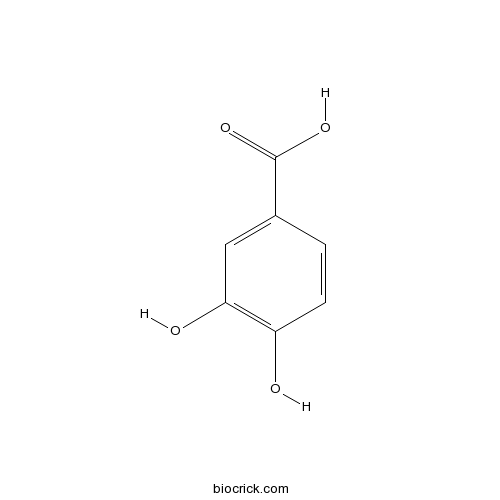Onychium japonicum
Onychium japonicum
1. The products in our compound library are selected from thousands of unique natural products; 2. It has the characteristics of diverse structure, diverse sources and wide coverage of activities; 3. Provide information on the activity of products from major journals, patents and research reports around the world, providing theoretical direction and research basis for further research and screening; 4. Free combination according to the type, source, target and disease of natural product; 5. The compound powder is placed in a covered tube and then discharged into a 10 x 10 cryostat; 6. Transport in ice pack or dry ice pack. Please store it at -20 °C as soon as possible after receiving the product, and use it as soon as possible after opening.
Natural products/compounds from Onychium japonicum
- Cat.No. Product Name CAS Number COA
-
BCN2606
Vincamine1617-90-9
Instructions

-
BCN4537
3,4-Dihydroxybenzoic acid99-50-3
Instructions

Survey of ferns and clinico-pathological studies on the field cases of Enzootic bovine haematuria in Himachal Pradesh, a north-western Himalayan state of India.[Pubmed: 28803058]
Enzootic bovine haematuria (EBH) in cattle occurs in upland areas of the world. In India, the disease is present in isolated pockets in the Himalayas and in the Nilgiri Hills. The variation in the disease incidence has been attributed to different environmental conditions and animal rearing practices followed in the different regions. The aim of the study was to conduct field surveys in parts of EBH endemic regions of Himachal Pradesh, a north-western Himalayan state of India. Out of the total 103 plant samples collected, a total of 95 samples were identified as ferns. The major ferns identified included, Onychium japonicum (Thunb.) Kunze, Polystichum piceopaleaceum Tagawa, Dryopteris juxtaposita Christ, Pseudocyclosorus canus (Baker) Holttum and J.W. Grimes, Onychium contiguum C. Hope, Dryopteris nigropaleacea (Fraser-Jenk.), Pteridium aquilinum (L.) Kuhn, Diplazium esculentum (Retz.) Sw., Allantodia maxima (D. Don) Ching, Woodwardia unigemmata (Makino) Nakai, Pteris cretica L., Pteris vittata L., Asplenium trichomanes L., Thelypteris phegopteris (L.) Sloss. ex Rydb, Adiantum venustum D. Don and Paraceterach vestita (Hook.) R.M. Tryon. The concentration of ptaquiloside (PTA) and pterosin B (PtB) in some of the ferns collected from Kullu and Chamba regions ranged from 0 to 358.6 ± 70.5 μg/g and 0 to 652.4 ± 50.0 μg/g, respectively. In addition, field cases of the disease in cattle were also studied in the EBH endemic districts. A total of sixteen cattle urine samples and one urinary bladder of EBH affected cattle were collected. On physical, chemical (benzidine test) and microscopic examination of urine sediment, all the sixteen field samples were found to be positive for erythrocytes and the cases were diagnosed as macrohaematuria. The clinico-pathological studies on the field cases and the presence of PTA and PtB in the ferns indicated that EBH is a prevalent disease and there is an association between chronic fern ingestion and EBH in cattle. On the basis of gross pathology, histopathology and immunohistochemistry (p53 and H-ras nuclear expression in the urothelial cells) of the urinary bladder tissue, the field case was diagnosed as transitional cell adenocarcinoma with chronic lymphocytic cystitis.
Isolation of novel phenolic compounds with multidrug resistance (MDR) reversal properties from Onychium japonicum.[Pubmed: 21674783]
We isolated seven novel compounds, namely, 3',4',6-trihydroxy-2,4-dimethoxy-3-(3″,4″-dihydroxybenzyl)chalcone (1), 3',6-dihydroxy-2,4,4'-trimethoxy-3-(3″,4″-dihydroxybenzyl)chalcone (2), α,β-dihydro-3',6-dihydroxy-2,4,6'-trimethoxy-3-(3″,4″-dihydroxybenzyl)chalcone (3), 3',4,4'-trihydroxy-2,6-dimethoxychalcone (4), 4',5,7-trihydroxy-6-(3″,4″-dihydroxybenzyl)flavone (5), 3-(3',4'-dihydroxybenzyl)-6,7-dihydroxycoumarin (6), 3-(3',4'-dihydroxyphenyl)-3,4-dihydroisocoumarin (7), as well as a known compound, 3',4',7-trihydroxy-5-methoxyflavanone (8) from the whole grass of Onychium japonicum, and elucidated their structures by spectroscopic methods. Compounds 1-3 exhibited significant multidrug resistance (MDR) reversal effects on MCF-7/ADR and Bel-7402/5-Fu cell lines.
[Treatment of upper respiratory infection with mixt. 716 compound].[Pubmed: 8136647]
Mixt. 716 is composed of traditional Chinese medicinal herbs, including Oldenlandia diffusa, Euphorbia humifusa, Onychium japonicum, Acalypha australis. 150 cases of upper respiratory infection were divided into 716 treatment group (89 cases) and control group (61 cases) randomly. The effective rate was 92% in treatment group compared with 67% in control group. Experimental studies also showed that Mixt. 716 was slightly cytotoxic, it could obviously inhibit influenza virus A.
Antihepatotoxic actions of Formosan plant drugs.[Pubmed: 3586694]
One hundred twenty-nine samples of Formosan plants were screened for antihepatotoxic activity in primary cultured hepatocytes to reveal that 19 and 26 plants exhibited more than 50% inhibition against cytotoxicity produced by carbon tetrachloride and D-galactosamine, respectively. Plants which disclosed significant antihepatotoxic activity in both assay methods are: Wedelia chinense, Mallotus repandus, Phyllantus urinaria, Loranthus parasiticus, Ludwigia octovalvis, Onychium japonicum, Tamarix chinensis and Ampelopsis brevipedunculata.


